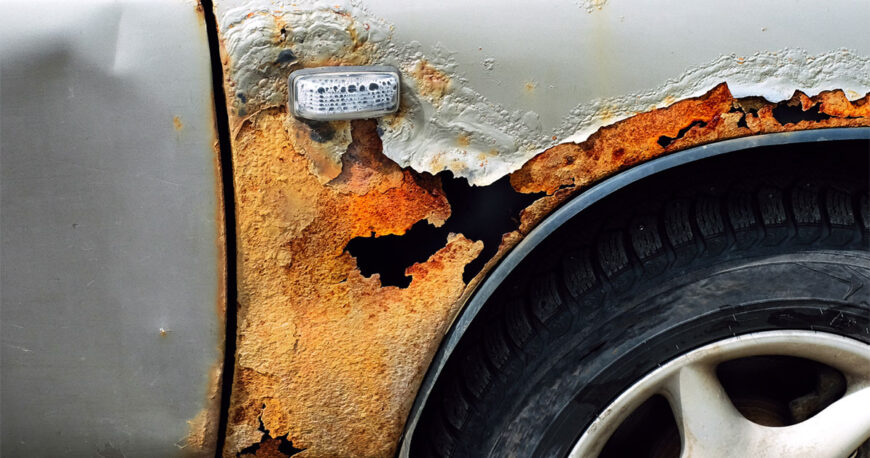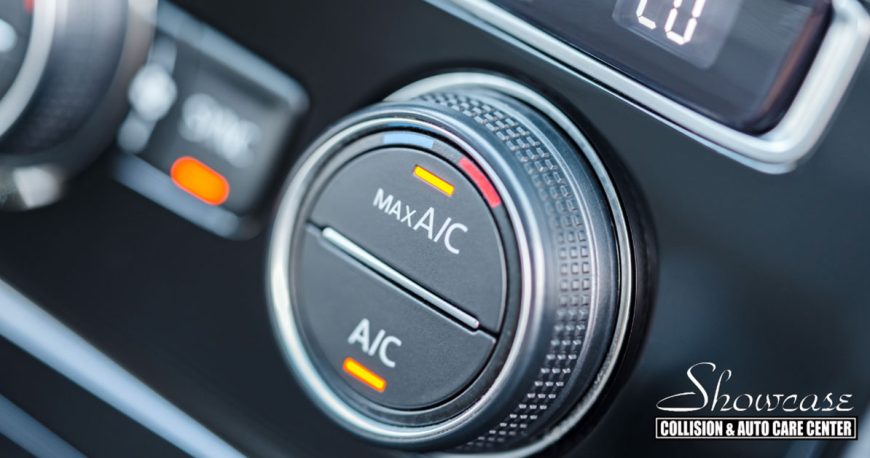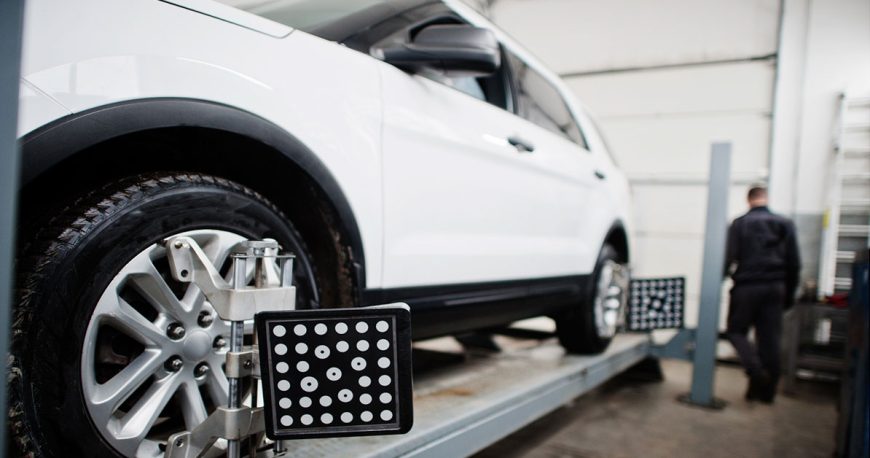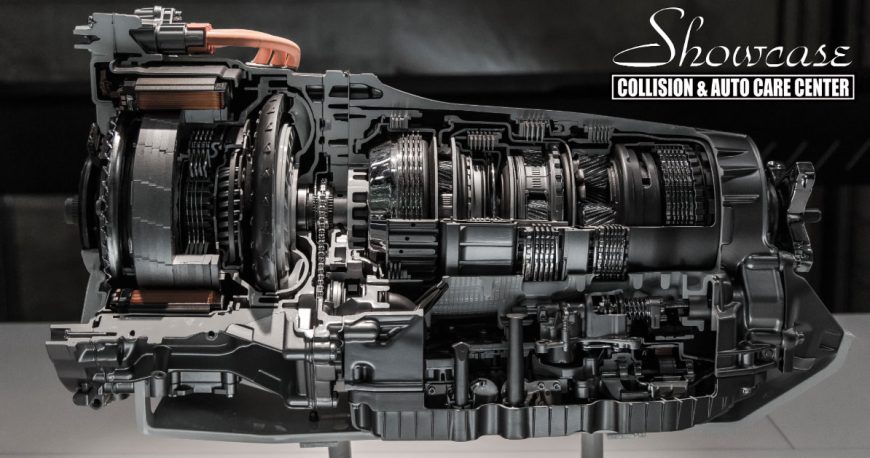You’ve just been through the stressful process of a car accident and the subsequent repair. You’ve picked up your vehicle, and it looks flawless—the new paint shines, the dents are gone, and it looks like the accident never happened. You’re ready to get back on the road and put the whole ordeal behind you.
But what you might not realize is that the journey isn’t quite over. A thorough post-repair inspection is a critical, final step that ensures your vehicle is not just visually perfect, but also structurally sound and, most importantly, safe to drive.
At Showcase Collision Warren, we don’t just restore your vehicle’s appearance; we restore its safety and performance to factory standards. We want to take you behind the scenes to show you why a final, detailed inspection is an indispensable part of our repair process and why you should never skip it.
The Hidden Dangers of an Incomplete Repair
An accident can cause damage that isn’t immediately visible. A dent in a fender could be hiding a bent frame or damaged suspension components. While a quick look might confirm the visible damage is fixed, a comprehensive inspection goes much deeper. Without this final check, you could be driving a car with:
- Compromised Structural Integrity: Modern vehicles are designed with crumple zones and specific structural components that absorb and redirect crash energy. If these areas are not repaired correctly, your vehicle’s ability to protect you in a future collision could be severely diminished.
- Misaligned Wheels or Suspension: Even a minor collision can throw off your vehicle’s alignment. This can lead to uneven tire wear, poor handling, and increased risk on the road. A final inspection includes checks to ensure your vehicle tracks straight and true.
- Faulty Safety Systems: Today’s cars are equipped with advanced safety systems like airbags, sensors, and cameras. An accident can damage these systems, and if they aren’t properly re-calibrated or replaced, they may not function correctly when you need them most.
- Hidden Electrical Issues: A collision can cause a domino effect of electrical problems. Wires can be pinched, connections can be loosened, and sensors can be damaged. A final inspection can reveal these issues before they cause a breakdown or a safety hazard.
Showcase Collision’s Commitment to Excellence
At Showcase Collision Warren, our post-repair inspection isn’t an afterthought—it’s the final, crucial step in our rigorous repair process. Our commitment to safety and quality is demonstrated in every repair we undertake, and it all culminates in this final checkpoint.
Our Post-Repair Inspection Process Includes:
- A Multi-Point Visual Inspection: Our technicians perform a final walk-around to ensure all panels are properly aligned, the paint finish is perfect, and all parts have been installed correctly. We check for even gaps and a seamless finish, just like it came from the factory.
- Advanced System Diagnostics: We use sophisticated diagnostic tools to check and re-calibrate all onboard systems, including airbag sensors, collision-avoidance systems, and other vehicle electronics that may have been impacted by the collision. This ensures every safety feature is fully functional.
- Frame and Structural Measurements: Our state-of-the-art frame machines are used for precise final measurements. We confirm that the vehicle’s frame and body are back to the manufacturer’s exact specifications, guaranteeing its structural integrity.
- Road Test: A final road test is conducted by a qualified technician to check for proper handling, braking, and steering. This confirms that the vehicle drives as it should, with no pulling or strange noises.
- Quality Control Checklists: We follow a meticulous checklist to ensure no detail is overlooked. From checking the lug nuts on your wheels to ensuring all fluids are at their proper levels, every item is confirmed before we hand you back the keys.
Our Promise to You
A repair is only as good as its final result. At Showcase Collision Warren, we’re proud of our technicians’ certifications and experience, which represent our unwavering commitment to the highest industry standards. Our employees are a testament to our continuous training and expertise in modern repair techniques.
When you bring your vehicle to Showcase Collision Warren, you’re not just getting a repair—you’re getting a complete restoration. We believe that a truly successful repair is one that not only makes your car look great but also makes it as safe as it was the day you bought it.
Don’t settle for anything less than a full, comprehensive repair and a detailed final inspection. It’s an investment in your safety and the longevity of your vehicle.
If you’ve been in an accident and want peace of mind knowing your vehicle is in expert hands, contact Showcase Collision Warren today for a free and transparent estimate.
Independence Day weekend is a time for celebration, family, fireworks, and often, travel. While the spirit of the holiday is all about freedom, the roads can become incredibly congested and, unfortunately, more dangerous. With increased traffic, festive gatherings, and the potential for impaired driving, staying vigilant behind the wheel is more important than ever.
At Showcase Collision Warren, we’re dedicated to keeping our community safe on the roads. While we’re here to help if the unexpected happens, our primary goal is to help you avoid accidents altogether. Here are essential safe driving tips to ensure your Independence Day weekend is filled with joy, not unforeseen repairs.
1. Plan Your Route and Schedule Smart
Independence Day is one of the busiest travel holidays of the year. Expect delays, especially on major highways and near popular destinations.
- Beat the Rush: If possible, try to leave early in the morning or late at night to avoid peak travel times. The worst congestion often occurs in the afternoons and early evenings leading up to and on the holiday itself (e.g., afternoon of July 3rd, and midday on July 4th).
- Check Traffic Updates: Before you head out and during your journey, use GPS apps or local traffic reports to monitor road conditions and identify potential bottlenecks or accidents. Be prepared to take alternate routes if necessary.
- Factor in Extra Time: Don’t rush. Give yourself plenty of extra time to reach your destination. Speeding and aggressive driving significantly increase your risk of an accident, especially in heavy traffic.
2. Prioritize Sober Driving
This is arguably the most critical tip for any holiday weekend, and especially for Independence Day. Alcohol consumption is often part of celebrations, but driving under the influence can have devastating consequences.
- Designate a Sober Driver: If you plan to drink alcohol, choose a designated driver who will not consume any alcohol.
- Utilize Ride Services: Taxis, ride-sharing apps, or public transportation are readily available alternatives if a sober driver isn’t an option.
- Stay the Night: If you’re at a gathering, consider staying overnight if you’ve consumed alcohol.
- Be an Advocate: If you see someone who has been drinking attempting to drive, take their keys and help them find a safe way home. You could save a life.
- Report Impaired Drivers: If you spot a driver who appears to be impaired on the road, safely pull over and call 911.
3. Eliminate Distractions
With more cars on the road and the excitement of the holiday, distractions can be even more hazardous.
- Put the Phone Away: Texting or talking on a handheld phone is illegal and incredibly dangerous. Silence your phone or put it in a place where you won’t be tempted to use it.
- Pre-Set Navigation: Program your GPS or map your route before you start driving.
- Manage Entertainment: If you have passengers, let them handle the music or entertainment. If driving alone, pull over safely if you need to adjust anything that takes your eyes off the road.
- Avoid Eating/Drinking: Try to avoid eating or drinking messy foods while driving.
4. Buckle Up, Every Time
This seems like a no-brainer, but it’s the simplest and most effective way to protect yourself and your passengers in the event of a crash.
- All Occupants, All the Time: Ensure everyone in the vehicle, front seat or back, is properly buckled up.
- Child Seats: For children, confirm that car seats and booster seats are correctly installed and used according to age, height, and weight requirements.
5. Maintain Your Vehicle
A well-maintained vehicle is a safer vehicle, especially before a long trip.
- Tires: Check your tire pressure (including your spare!) and inspect the tread depth. Proper tire inflation improves handling and fuel efficiency.
- Fluids: Top off engine oil, coolant, brake fluid, and windshield washer fluid.
- Lights: Ensure all headlights, taillights, brake lights, and turn signals are fully functional.
- Wipers: Inspect your windshield wipers for any signs of wear and tear, as spring and summer showers can pop up unexpectedly.
6. Drive Defensively and Patiently
Holiday traffic can be frustrating, but aggressive driving only increases risk.
- Maintain Following Distance: Leave plenty of space between your vehicle and the one in front of you. The “3-second rule” is a good guideline, increasing to 4 or 5 seconds in adverse conditions or heavy traffic. This gives you more time to react to sudden stops.
- Watch for Others: Be extra aware of motorcycles, bicycles, and pedestrians, as more people are out and about.
- Beware of Drowsy Driving: If you’re feeling tired, pull over to a safe rest area for a break or switch drivers. Driving drowsy can be as dangerous as driving impaired.
7. Be Prepared for the Unexpected
Even with the best precautions, emergencies can happen.
- Emergency Kit: Keep an emergency kit in your vehicle with items like jumper cables, a flashlight, basic tools, a first-aid kit, and a fully charged cell phone.
- Roadside Assistance: Have your roadside assistance information readily available.
At Showcase Collision Warren, we genuinely care about your safety. By following these essential tips, you can significantly reduce your risk of an accident and ensure your Independence Day weekend is a truly joyous and safe celebration. Should you find yourself needing our services for any collision repair, know that our expert team is here to help restore your vehicle to its pre-accident condition with precision and care.
From all of us at Showcase Collision Warren, have a safe and happy Independence Day!
Winter can be tough on your vehicle. From icy roads and salt spray to fluctuating temperatures, your car has likely endured a significant amount of stress. As the days lengthen and the weather warms, it’s the perfect time to give your vehicle some much-needed attention. At Showcase Collision Warren, while our expertise lies in restoring your car after an accident, we also believe in preventative care. Here are essential spring car maintenance tips to help you shake off the winter blues and ensure your vehicle is ready for the warmer months ahead.
1. Wash Away Winter’s Grime:
The first step is a thorough wash, inside and out. Winter road salt and grime can accumulate on your car’s exterior, leading to rust and corrosion over time. Pay close attention to the undercarriage, wheel wells, and rocker panels where salt tends to collect.
- Tip: Consider a professional detailing service for a deep clean, especially if you frequently drove on salted roads. Don’t forget to clean your floor mats, which likely trapped a lot of winter debris.
2. Check Your Tires:
Winter often brings lower tire pressures. As temperatures rise in the spring, your tire pressure will naturally increase. Ensure your tires are inflated to the manufacturer’s recommended pressure (found on the sticker inside your driver’s side doorjamb, not just the tire itself).
- Tip: Inspect your tires for any signs of damage like cuts, bulges, or uneven wear. Rotate your tires to ensure even wear and prolong their lifespan. If your winter tires are still on, now is the time to switch back to all-season or summer tires for optimal performance and fuel efficiency.
3. Inspect Fluids:
Your vehicle relies on various fluids to run smoothly. Spring is a good time to check and top off (or replace, if necessary) the following:
- Engine Oil: Check the oil level and condition. If it’s dark or nearing its recommended change interval, get it changed.
- Coolant: Ensure the coolant level is adequate to prevent overheating in warmer temperatures. Check the concentration to ensure it provides adequate protection against both freezing and boiling.
- Windshield Washer Fluid: Refill with a good quality washer fluid to tackle spring showers and road spray.
- Brake Fluid: Check the brake fluid level and color. Low fluid or dark, murky fluid could indicate a leak or contamination, requiring professional attention.
- Power Steering Fluid: Ensure the level is correct and the fluid looks clean.
4. Test Your Battery:
Winter can be harsh on your car battery. Cold temperatures reduce battery power, and the added strain of headlights and defrosters can take a toll.
- Tip: Have your battery tested by a professional to ensure it’s still holding a charge effectively. Clean any corrosion from the battery terminals and ensure the connections are secure.
- Evaluate Your Brakes:
Your brakes are crucial for safety. Spring is a good time to have them inspected.
- Tip: Listen for any unusual noises like squealing or grinding when braking. Pay attention to whether your brake pedal feels spongy or if your car pulls to one side when braking. If you notice any of these issues, schedule a brake inspection immediately.
6. Check Your Wipers:
Winter weather can damage your windshield wipers, leading to streaks and reduced visibility during spring showers.
- Tip: Inspect your wiper blades for cracks, tears, or stiffness. Replace them if they aren’t cleaning your windshield effectively. Consider replacing them annually for optimal performance.
7. Inspect Lights and Signals:
Ensure all your vehicle’s lights are working correctly, including headlights, taillights, brake lights, and turn signals.
- Tip: Have someone help you check the brake lights while you press the pedal. Replace any burnt-out bulbs.
8. Check Belts and Hoses:
Extreme temperatures can cause belts and hoses to crack, fray, or leak.
- Tip: Visually inspect all belts for signs of wear and tear. Squeeze hoses to check for softness, bulges, or leaks. If you notice any issues, have them inspected and replaced by a professional.
9. Refresh Your Cabin Air Filter:
The cabin air filter traps dust, pollen, and other airborne particles from entering your vehicle’s cabin. After a dusty winter, it’s likely due for a replacement.
- Tip: Replacing your cabin air filter will improve the air quality inside your car, especially important as allergy season approaches.
10. Schedule a Spring Check-Up:
For comprehensive peace of mind, consider scheduling a spring maintenance check-up with your trusted mechanic. They can perform a thorough inspection of your vehicle and address any potential issues before they become bigger problems.
At Showcase Collision Warren, while we hope you don’t need our collision repair services, we are here to help if the unexpected happens. Taking the time for these spring maintenance tasks can help prevent breakdowns and ensure your vehicle is safe and reliable for all your spring and summer adventures.
Drive safely and enjoy the warmer weather!
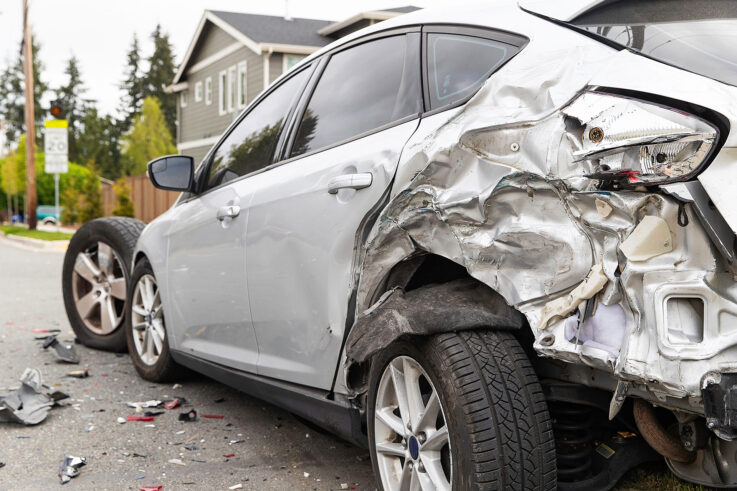
Getting into a car accident, even a minor one, can be a stressful experience. Beyond the immediate shock, you’re faced with the daunting task of repairing your vehicle. Understanding the types of collision damage and the repair techniques involved can help alleviate some of that stress and empower you to make informed decisions. At Showcase Collision Warren, we believe in transparency and educating our customers. This blog post will break down some of the most common collision repairs we handle.
1. Minor Dents and Dings:
These are often the result of parking lot mishaps, hail damage, or small road debris. While seemingly cosmetic, they can diminish your car’s value and, if left untreated, potentially lead to rust.
- Damage: Small indentations or scratches in the body panels.
- Repair Techniques:
- Paintless Dent Repair (PDR): This technique is ideal for minor dents where the paint hasn’t been compromised. Specialized tools are used to massage the dent out from the inside, preserving the original factory finish. PDR is often faster and more cost-effective than traditional methods.
- Traditional Dent Repair: For deeper dents or those with paint damage, traditional methods are employed. This involves filling the dent with body filler, sanding it smooth, and repainting the affected area to match the original color.
2. Bumper Damage:
Bumpers are designed to absorb impact, but they can still sustain damage in a collision.
- Damage: Scratches, cracks, dents, or complete detachment of the bumper.
- Repair Techniques:
- Bumper Repair: Minor scratches and dents can often be repaired using specialized fillers and paint.
- Bumper Replacement: If the bumper is severely damaged or cracked, it may need to be replaced entirely.
3. Fender Bender Damage:
Fender benders can range from minor scrapes to significant structural damage.
- Damage: Dents, creases, or tears in the fenders, potentially affecting the wheel alignment and suspension.
- Repair Techniques:
- Panel Beating: Technicians use specialized tools to reshape the fender back to its original form.
- Fender Replacement: In cases of severe damage, the fender may need to be replaced.
4. Frame Damage:
This is the most serious type of collision damage and requires specialized expertise.
- Damage: Bending, twisting, or misalignment of the vehicle’s frame, which can severely compromise its structural integrity and safety.
- Repair Techniques:
- Frame Straightening: Specialized equipment is used to carefully pull and realign the frame back to its factory specifications. This is a critical step in ensuring the vehicle’s safety and handling.
5. Collision Damage Affecting Mechanical Components:
Collisions can also impact mechanical components like the suspension, steering, and brakes.
- Damage: Broken or damaged parts, misalignment, fluid leaks.
- Repair Techniques:
- Component Replacement: Damaged parts are replaced with new or remanufactured components.
- Alignment: Wheel alignment is crucial after a collision to ensure proper handling and tire wear.
6. Windshield and Glass Damage:
Even small cracks in the windshield can spread and become a safety hazard.
- Damage: Cracks, chips, or shattered glass.
- Repair Techniques:
- Windshield Repair: Small chips and cracks can sometimes be repaired using specialized resin.
- Windshield Replacement: Larger cracks or damage in the driver’s line of sight require complete windshield replacement.
At Showcase Collision Warren, we understand the complexities of collision repair. Our team of highly skilled technicians uses state-of-the-art equipment and industry-leading techniques to restore your vehicle to its pre-accident condition. We’re committed to providing quality repairs and exceptional customer service.
If you’ve been in an accident, don’t hesitate to contact Showcase Collision Warren. We’ll guide you through the repair process and get you back on the road safely.
As the winter months approach, it’s important to ensure your teen driver is prepared for the challenges of winter driving. Here are some essential car safety tips to help keep your young drivers safe on the road:
1. Winterize Your Vehicle:
- Tire Check: Ensure your teen’s car has all-season or winter tires with adequate tread depth.
- Battery Check: Have the battery tested to ensure it can withstand cold temperatures.
- Wiper Blades: Replace worn wiper blades with winter-grade ones.
- Windshield Washer Fluid: Use winter-grade windshield washer fluid to prevent freezing.
- Antifreeze Check: Ensure the antifreeze/coolant mixture is appropriate for cold weather.
2. Teach Defensive Driving Techniques:
- Increased Stopping Distance: Emphasize the importance of increasing stopping distance in icy conditions.
- Avoiding Sudden Maneuvers: Discourage sudden braking, acceleration, and turning, as these can lead to loss of control.
- Safe Passing: Teach your teen to be patient and avoid passing other vehicles in hazardous conditions.
3. Emphasize the Importance of Seat Belts:
- Buckle Up: Remind your teen to always wear a seatbelt, even for short trips.
- Proper Seat Belt Usage: Ensure they know how to properly adjust and wear their seatbelt.
4. Limit Distractions:
- Phone Usage: Reinforce the dangers of using a cell phone while driving, even with hands-free technology.
- Passenger Distractions: Encourage your teen to minimize distractions from passengers.
5. Practice Winter Driving Skills:
- Find a Safe Location: Look for a deserted parking lot or quiet road to practice driving in snowy or icy conditions.
- Controlled Skids: Under controlled conditions, practice how to recover from a skid.
- Hill Starts: Practice hill starts to avoid rolling back.
- Emergency Braking: Practice emergency braking techniques on a snow-covered road.
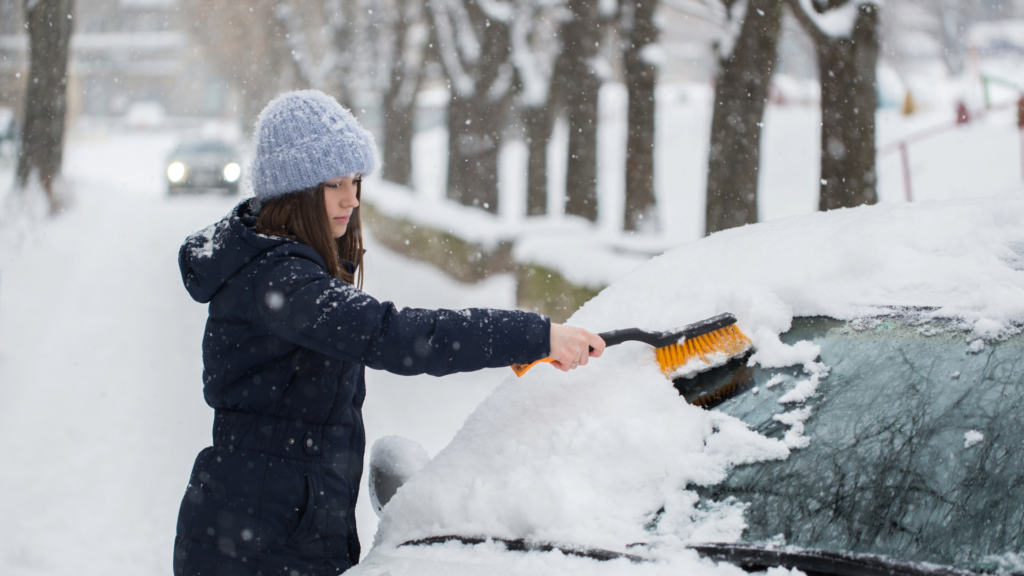
6. Emergency Kit:
- Essential Items: Encourage your teen to keep an emergency kit in their car, including:
- Jumper cables
- Flashlight
- First-aid kit
- Warm blankets
- Non-perishable food and water
- Ice scraper and snow brush
By following these tips and setting a good example as a driver, you can help your young drivers stay safe on the road this winter. Remember, a little extra care and attention can go a long way in preventing accidents and keeping your teen safe.
As the leaves begin to change and the temperature drops, it’s time to prepare your vehicle for the colder months ahead. Fall car care is crucial to ensure your vehicle is safe and reliable during the winter season. In this blog post, we’ll guide you through a step-by-step checklist to help you get your car winter-ready.
Why Fall Car Care Matters
Neglecting fall car care can lead to a variety of problems, including:
- Poor performance: Cold weather can affect your car’s engine, battery, and tires, leading to decreased performance.
- Safety hazards: Faulty brakes, worn tires, and poor visibility can increase the risk of accidents.
- Costly repairs: Ignoring small issues can lead to more significant problems and expensive repairs.
Essential Fall Car Care Tips
1. Tire Check:
-
- Tire Pressure: Ensure your tires are inflated to the correct pressure, as recommended by the manufacturer. Underinflated tires can reduce fuel efficiency and increase the risk of blowouts.
- Tire Tread Depth: Check the tread depth to ensure adequate traction in slippery conditions. If the tread is worn, consider replacing your tires.
- Tire Rotation: Rotate your tires to promote even wear and extend their lifespan.
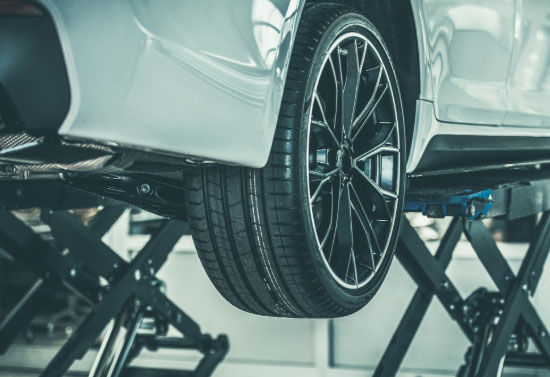 2. Battery Inspection:
2. Battery Inspection:
-
- Battery Health: Have your battery tested to ensure it can withstand cold temperatures. A weak battery can cause starting issues, especially in cold weather.
- Battery Terminals: Clean the battery terminals to prevent corrosion, which can hinder electrical conductivity.
3. Coolant Check:
-
- Coolant Level: Ensure your coolant level is sufficient and that the coolant is mixed with water in the correct ratio.
- Coolant Strength: Test the coolant’s freezing point to ensure it can protect your engine from freezing.
4. Wiper Blades:
-
- Wiper Blade Condition: Inspect your wiper blades for signs of wear, such as cracking or streaking. Replace worn blades to ensure clear visibility during rain and snow.
- Wiper Fluid: Fill your windshield washer fluid reservoir with winter-grade fluid that can withstand freezing temperatures.
5. Heating System:
-
- Heating Function: Test your car’s heating system to ensure it’s working properly. A faulty heater can make winter driving uncomfortable.
6. Lights:
-
- Headlights and Taillights: Check all exterior lights to ensure they are functioning correctly. Replace any burned-out bulbs.
- Fog Lights: If your car is equipped with fog lights, make sure they are clean and working properly.
7. Undercarriage Inspection:
-
- Rust and Corrosion: Look for signs of rust and corrosion on your car’s undercarriage. Address any issues promptly to prevent further damage.
- Fluid Leaks: Check for any fluid leaks, such as oil or transmission fluid.
Additional Tips for Fall Car Care
- Clean Your Car: Remove leaves, dirt, and debris from your car’s exterior and interior.
- Wash Your Car Regularly: Regular car washes can help prevent rust and corrosion.
- Use a High-Quality Car Wax: Waxing your car can help protect its paint from the elements.
- Store Your Summer Tires: Properly store your summer tires to prevent damage.
By following these fall car care tips, you can ensure your vehicle is ready to handle the challenges of winter driving. If you need any assistance with your car’s maintenance or repair needs, contact Showcase Collision.
Call Now
By taking the time to prepare your car for the colder months, you can enjoy a safe and comfortable driving experience.
Rust is the enemy of every car owner. It’s a silent, insidious problem that can quickly escalate from a minor blemish to a major structural issue. Early detection is key to preventing costly repairs. This guide will walk you through how to inspect your car for signs of rust and what to do if you find it.
Understanding Rust
Rust, or corrosion, is a chemical reaction that occurs when iron comes into contact with oxygen and water. While it might seem like a slow process, it can significantly weaken a car’s structure over time.
Where to Look for Rust
Rust can appear in various parts of your car. Here’s where to focus your attention:
Exterior
- Undercarriage: This area is particularly susceptible to rust due to exposure to road salt, water, and debris. Look for bubbling paint, flaking paint, or exposed metal.
- Wheel Wells: These areas can trap moisture and dirt, creating the perfect environment for rust. Check for rust spots, especially around the wheel arches.
- Doors: Pay attention to the edges of the doors, where they meet the body. Look for bubbles, peeling paint, or rust holes.
- Hood and Trunk: Inspect the edges and corners of these panels for signs of rust.
- Roof: While less common, check the roof for any rust spots, especially if your car has a sunroof.
Interior
- Trunk: Look for rust on the inner panels of the trunk.
- Floor Mats: If you notice dampness or a musty smell, it could be a sign of underlying rust.
- Frame Rails: While difficult to access, if you have the opportunity, inspect the frame rails for rust.
Signs of Rust
- Bubbling Paint: This is a clear indication that rust is forming beneath the paint.
- Peeling Paint: If the paint is peeling or flaking, it could be a sign of underlying rust.
- Rust Holes: These are obvious signs of advanced rust damage.
- Surface Rust: This is a reddish-brown discoloration on the metal surface.
- Scale: A flaky, powdery substance that forms on rusted metal.
Preventing Rust
While early detection is crucial, prevention is even better. Here are some tips:
- Regular Washing and Waxing: Removing dirt, salt, and other contaminants helps protect your car’s finish.
- Undercoating: This protective coating can help shield your car’s undercarriage from rust.
- Car Covers: Using a car cover can protect your car’s paint from environmental factors.
- Promptly Address Damage: Repairing dents, scratches, and chips quickly can prevent rust from starting.
When to Seek Professional Help
If you find signs of rust, it’s essential to address the issue promptly. While minor surface rust can sometimes be treated with a rust converter, more extensive damage requires professional attention. Showcase Collision can provide expert rust repair services, restoring your car to its former glory.
Remember: Early detection and treatment of rust can save you money and extend the life of your vehicle. By following these tips and seeking professional help when needed, you can protect your car from the ravages of rust.
Summer’s here in Michigan, and with it comes the blazing sun and scorching temperatures. As you crank up the air conditioning (A/C) for a cool ride, you might be met with a blast of lukewarm air instead. Don’t despair! Here at Showcase Collision and Auto Care Center, we understand the importance of a functioning A/C system, especially during Michigan’s hot summers.
This blog will guide you through the telltale signs that your car’s A/C needs attention. By recognizing these symptoms early on, you can avoid discomfort and potential damage to your vehicle’s cooling system.
Signs Your Car’s A/C Needs Service
Several red flags can indicate your car’s A/C system isn’t performing optimally. Here are some key ones to watch out for:
1. Weak or Lukewarm Airflow
The most obvious sign is a lack of cool air coming from the vents. You might feel a slight breeze, but it won’t be enough to combat the summer heat. This could indicate low refrigerant levels, a clogged cabin air filter, or a malfunctioning compressor – the heart of your A/C system.
2. Unpleasant Odors
If you turn on the A/C and are greeted by a musty or moldy smell, it’s a strong indicator of a clogged evaporator core. This core helps cool the air, and moisture buildup within it can lead to mold growth, causing an unpleasant odor.
3. Strange Noises
Your A/C system should operate relatively quietly. If you hear grinding, hissing, or clunking sounds when you turn on the A/C, it could be a sign of a failing compressor, worn bearings, or debris caught within the system. These noises require immediate attention to prevent further damage.
4. Leaks
Finding puddles under your car after using the A/C could be a sign of a refrigerant leak. Refrigerant is a vital component that absorbs heat within the system. A leak will significantly reduce cooling efficiency and could damage other A/C components if left unchecked.
5. Inconsistent Performance
Does your A/C only blow cold air intermittently? This inconsistency could be caused by electrical issues, a faulty A/C control module, or low refrigerant levels that fluctuate with temperature changes.
Benefits of Regular A/C Maintenance
Scheduling regular A/C maintenance offers several advantages:
- Improved Cooling Performance: A well-maintained system ensures your car stays cool and comfortable even on the hottest days.
- Enhanced Fuel Efficiency: A properly functioning A/C puts less strain on your engine, leading to better fuel economy.
- Reduced Repair Costs: Addressing minor issues early on prevents them from snowballing into expensive repairs later.
- Extended System Lifespan: Regular maintenance helps your A/C system last longer.
- Improved Air Quality: A clean cabin air filter removes dust, pollen, and other allergens, promoting a healthier in-car environment.
Schedule Your A/C Service Today!
At Showcase Collision and Auto Care Center, our certified technicians are equipped to diagnose and service all your car’s A/C needs. We offer a comprehensive A/C maintenance package that includes:
- Leak Detection and Repair
- Refrigerant Level Check and Recharge
- Evaporator Core Cleaning
- Cabin Air Filter Replacement
- A/C System Performance Inspection
Don’t let a malfunctioning A/C system ruin your summer drives! Schedule your appointment with Showcase Collision and Auto Care Center today. Call us at (586) 979-6450 to experience the cool comfort you deserve this Michigan summer!
Looking for more car care tips? Check out our blog for informative articles on various auto maintenance topics!
Seasonal Tire Maintenance Routines
As the weather transitions from winter to spring, it’s important to keep an eye on your tire pressure. During the cold winter months, temperatures drop, causing tire pressure to decrease. Temperature changes often lead to the need for additional air in a to maintain the recommended psi. However, as spring arrives and temperatures rise, the previously added air can cause overinflation, leading to harder sidewalls and treads, reduced traction and performance, and accelerated wear in the center section of the treaded area.
In addition to temperature-related pressure changes, road treatments like salt and sand used to improve traction on icy roads can be harsh on tires and wheels due to their abrasive and corrosive nature. Potholes resulting from winter plowing and the freeze/thaw cycle can also pose a threat to tires and wheels, causing damage to the sidewalls and rims.
Aligning Your Tires
Furthermore, hitting a pothole can jar the steering system, leading to misalignment and steering issues. This can be identified by symptoms such as the car pulling to one side or decreased steering responsiveness. Regular tire rotations, along with inspections and alignments, can help preserve balanced handling, maintain traction, and promote even tread wear, ultimately prolonging tire life.
If the winter has taken a toll on your tires and you need replacements, it’s essential to consult with professionals to find the best tires at a great price. Keeping up with routine tire evaluations and maintenance recommendations, including regular visits and tire rotations, can help prevent potential road problems.
Getting a Tire Rotation
Ensure that you are getting your tire alignment checked every season change. When you take your vehicle in for a tire alignment it is a smart idea to have your tires rotated too. Tire rotation is changing the position of your tires by moving them to different spots on the axle. There are some great benefits to tire rotation.
- Improved traction and performance in rainy and wet road conditions
- Fosters even tread wear and increases tire longevity
- Keeps your car handling in check
Schedule A Spring Checkup
Big Tire Savings
If you are looking for deals on maintenance and new tire savings keep an eye on our promotions and our Facebook page.
When faced with transmission issues, one of the most pressing questions for car owners is whether to opt for repairs or invest in a replacement. This decision involves considering various factors, including the extent of the damage, the age of the vehicle, and overall cost implications. In this guide, we will delve into the key considerations that can help you determine whether it’s cheaper to repair or replace a transmission. Understanding these factors will empower you to make an informed decision that aligns with both your budget and the longevity of your vehicle.
1. Assessing the Severity of the Issue
The first step in deciding between transmission repair and replacement is evaluating the severity of the problem. Minor issues such as fluid leaks or slipping gears might be resolved through targeted repairs. On the other hand, extensive damage to internal components could warrant a complete transmission replacement. Consult with a qualified mechanic to conduct a thorough diagnosis and provide insights into the specific nature of the problem.
2. Vehicle Age and Mileage
Consider the age and mileage of your vehicle when weighing repair versus replacement. In some cases, older vehicles with high mileage may benefit more from a new transmission, as it ensures a fresh start and improved performance. However, for newer vehicles with a relatively low mileage, targeted repairs might be a cost-effective solution to address specific issues without the need for a full replacement.
3. Cost of Repairs vs. Replacement
Obtain detailed cost estimates for both repairs and replacement. While repairs might seem financially attractive initially, recurring issues could lead to cumulative expenses. A new transmission, although a larger upfront investment, could provide a more reliable and long-term solution, potentially saving money in the extended lifespan of your vehicle.
4. Warranty Considerations
Evaluate the warranties associated with both repair work and replacement transmissions. Reputable repair shops often provide warranties for their services, ensuring that you are covered in case issues persist. Similarly, replacement transmissions may come with warranties, offering added peace of mind regarding the longevity and performance of the new component.
5. Resale Value Impact
Take into account the impact on the resale value of your vehicle. A new transmission can enhance the overall value and marketability of your car, especially if you plan to sell or trade it in the future. Potential buyers are often more inclined toward vehicles with recent, reliable transmissions.
Making the Right Choice
The decision to repair or replace a transmission depends on a combination of factors unique to your vehicle and situation. Consulting with a qualified mechanic you can trust, obtaining comprehensive cost estimates, and considering the long-term implications will guide you toward the most cost-effective and practical solution. By weighing these factors carefully, you can ensure the optimal performance and longevity of your vehicle without unnecessary financial strain.
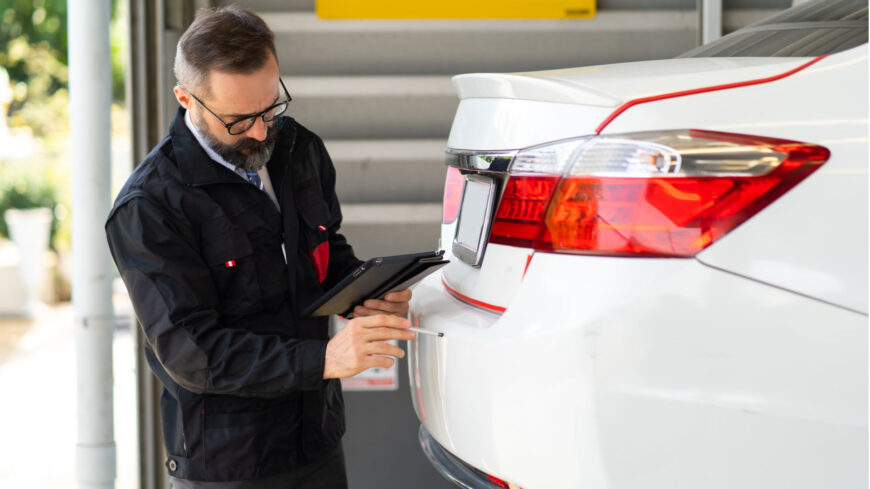



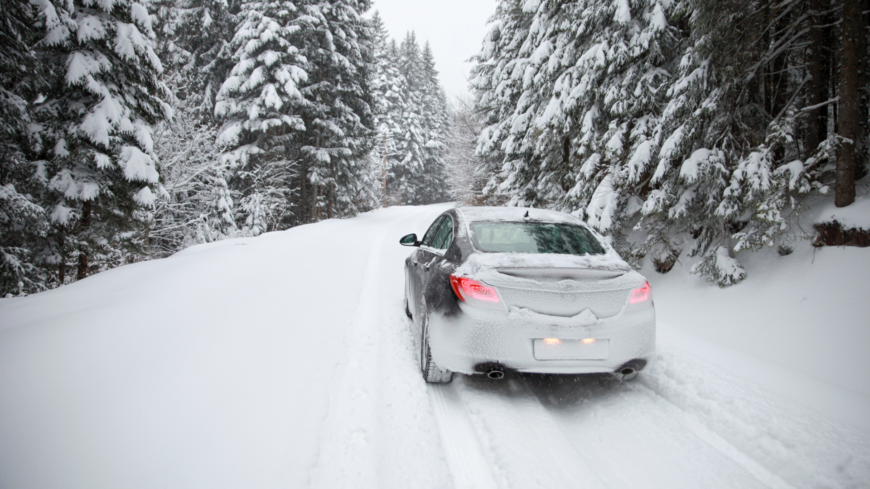


 2. Battery Inspection:
2. Battery Inspection: